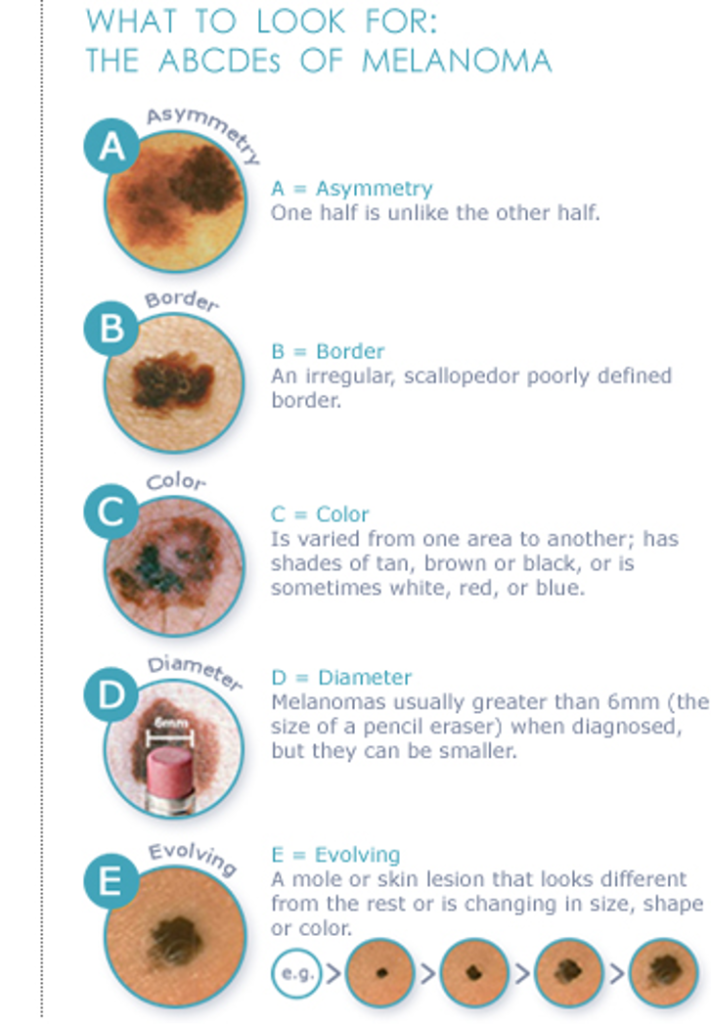Skin Cancer
Skin cancer is the most common type of cancer in the United States. The three most common forms of skin cancer are basal cell carcinoma, squamous cell carcinoma, and melanoma. Basal and squamous cell carcinoma are the most common skin cancers, while melanoma is the deadliest type. With early detection through routine skin screenings and treatment, these cancers have a high cure rate. Dr. McDaniel and Dr. Martin has specialized training to perform Mohs surgery on skin cancers that meet the criteria for the procedure.
A full body skin exam is a visual exam best conducted by a board-certified dermatologist who is an expert at identifying harmful spots or growths. During the exam, Dr. McDaniel or Dr. Martin will perform a thorough examination, paying close attention to hard-to-see areas like your scalp, back and buttocks, behind your ears, and even between your toes. She will be checking the skin for unusual marks which may be signs of skin cancer. Birthmarks, moles (also known as nevi), and other suspicious spots that have an unusual color, shape, size, or texture are what dermatologists usually pay most attention to during these screenings.
If a suspicious lesion is noted on skin exam, it may require a skin biopsy. This usually means removing part or all of the lesion and sending it to a lab for analysis. If the report comes back that the spot is cancerous, the appropriate treatment will be will be will be recommended.
What to look for: The ABCDE’s of Melanoma

How Often Should I Have a Full Body Skin Exam?
According to the American Academy of Dermatology, patients should have a full body skin exam annually, or once a year. People who spend a lot of time outside, have used tanning beds, or have received multiple sunburns before age 18 are at increased risk, as well as people with fair skin, hair, and eyes and those who burn easily. Skin cancer may also be hereditary. Regular skin examinations can ensure that skin cancer is caught early, minimizing the effects it has on the body and increasing your chances for a successful treatment.
To help you prepare and make the most of your appointment, follow these simple steps:
- Perform a self-exam so you are aware of any new, changing or unusual spots you want to point out to your dermatologist.
- Remove nail polishfrom your fingers and toes to enable thorough examination of fingers, nails and nail beds, since skin cancers can form there.
- Wear your hair loose so your scalp can be easily visualized.
- Remove any makeup before your exam so that your facial skin is easy to examine.
